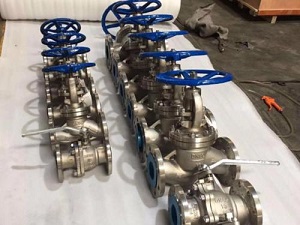Some frequently asked questions about valves

1. Why are double-flap valves prone to oscillation when working under small amplitude conditions?
For single-spool sanitary valves, when the medium is flow-open type, the valves are stable; when the medium is flow-closed type, the valves aren’t stable. Two-seat valve has two spools. The lower spool is in the flow-closed status, while the upper spool is in the flow-open type. So when working under small amplitude conditions, the flow-closed type of valve spool can easily trigger the valve’s oscillation. That’s why double-flap valves cannot be used under small amplitude conditions.
2. Why can’t double-sealing valves be used as sanitary shut-off valves?
The advantage of the spool of the two-seat valve is the balanced structure, allowing a large pressure difference, while its obvious disadvantage is that the two sealing surfaces can’t be in good contact at the same time, causing a large leakage.
3. Why should shut-off valves try to use hard sealing?
Shut-off valves need the leakage to be as low as possible. The leakage level of the soft sealing valve is the lowest, so the effect of shutting off is good. But it can’t withstand abrasion.
From the point of both small leakage and robust sealing, soft-sealing shut-off valves aren’t as good as hard sealing shut-off valves. For example, the all-function, the ultra-light sanitary regulating valve is sealed and piled with abrasion-resistant alloy, so it’s highly reliable and can meet the requirements of shut-off valves.




